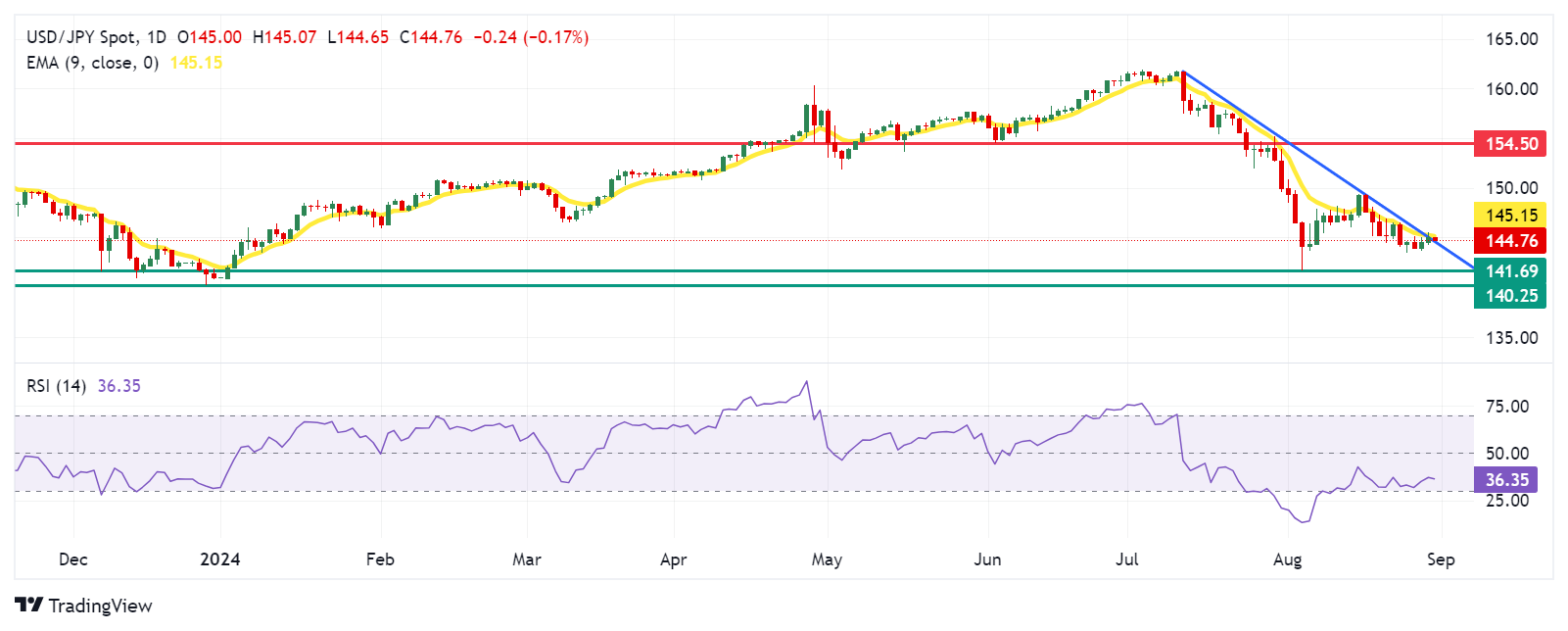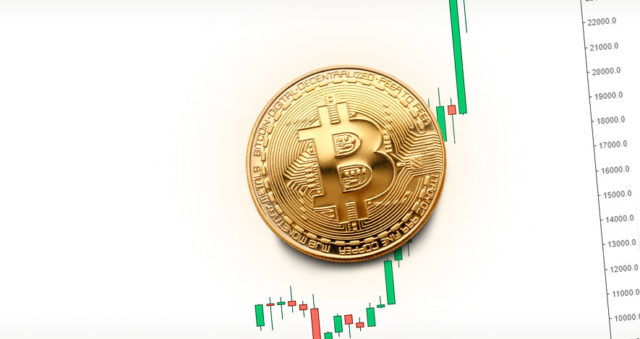- The Japanese Yen appreciates as rising inflation figures from Tokyo reinforce the BoJ’s hawkish stance on its policy outlook.
- Tokyo’s CPI rose to 2.6% year-on-year in August, from 2.2% in July.
- The US Dollar is holding firm following stronger-than-expected economic data on Thursday.
The Japanese Yen (JPY) is reversing its recent gains against the US Dollar (USD) following the release of Tokyo Consumer Price Index (CPI) data on Friday. Rising inflation in Tokyo reinforces the Bank of Japan’s (BoJ) hawkish monetary policy stance, supporting the JPY and putting downward pressure on the USD/JPY pair.
Tokyo’s Consumer Price Index (CPI) rose to 2.6% year-on-year in August, from 2.2% in July. Core CPI also rose to 1.6% year-on-year in August, compared with 1.5% previously. In addition, Japan’s unemployment rate unexpectedly rose to 2.7% in July, from both the market estimate and June’s 2.5%, marking the highest unemployment rate since August 2023.
The downside for the USD/JPY pair could be limited as the US Dollar maintains its recent gains following stronger-than-expected economic data released on Thursday. However, dovish comments from the Federal Reserve could restrict further gains for the Dollar.
Investors are looking ahead to the US Personal Consumption Expenditures (PCE) Price Index for July, due later in the North American session, looking for clues on the future direction of US interest rates.
Daily Market Wrap: Japanese Yen up slightly after Tokyo inflation data
- According to the CME’s FedWatch tool, markets fully anticipate at least a 25 basis point (bps) rate cut by the Fed at its September meeting.
- Atlanta Federal Reserve President Raphael Bostic, a leading hawk on the FOMC, indicated Thursday that it may be “time to act” on rate cuts given the further slowdown in inflation and a higher-than-expected unemployment rate. However, he wants to wait for confirmation from the next monthly jobs report and two inflation reports before the Fed’s September meeting.
- The U.S. Gross Domestic Product (GDP) grew at an annualized rate of 3.0% in the second quarter, exceeding both the expected and prior growth rate of 2.8%. In addition, Initial Jobless Claims showed that the number of people applying for unemployment benefits fell to 231,000 in the week ending August 23, from 233,000 previously and slightly below the 232,000 expected.
- Core Personal Consumption Expenditures (QoQ), the Federal Reserve’s preferred measure of underlying inflation, rose 2.8% in the second quarter, slightly below the market forecast of 2.9%. This marks a significant slowdown from the 3.7% growth seen in the first quarter.
- Japanese Finance Minister Shunichi Suzuki said on Tuesday that exchange rates are influenced by a variety of factors, including monetary policies, interest rate differentials, geopolitical risks and market sentiment. Suzuki added that it is difficult to predict how these factors will impact exchange rates.
- Bank of Japan (BoJ) Governor Kazuo Ueda addressed the Japanese parliament on Friday, stating that he is “not considering selling long-term Japanese government bonds (JGBs) as a tool to adjust interest rates.” He noted that any reduction in JGB purchases would only account for about 7-8% of the balance sheet, which is a relatively small decrease. Ueda added that if the economy aligns with their projections, there could be a phase where they might adjust interest rates a bit further.
Technical Analysis: USD/JPY remains below 145.00
USD/JPY is trading around 144.80 on Friday. The daily chart analysis indicates that the pair is positioned above the downtrend line, which points to a weakening of the bearish bias. However, the 14-day Relative Strength Index (RSI) remains above 30, signaling a confirmation of the bearish trend.
On the downside, the USD/JPY pair could test the immediate downtrend line around the 144.50 level. A break below this level could lead the pair to navigate the area around the seven-month low of 141.69, recorded on August 5, followed by the next retracement support at 140.25.
As for resistance, the USD/JPY pair could test the immediate barrier at the nine-day exponential moving average (EMA) around 145.15. A move above this level could open the door for the pair to approach the resistance area near 154.50.
USD/JPY: Daily Chart
Japanese Yen PRICE Today
The table below shows the Japanese Yen (JPY) exchange rate against major currencies today. The Japanese Yen was the strongest currency against the Euro.
| USD | EUR | GBP | JPY | CAD | AUD | NZD | CHF | |
|---|---|---|---|---|---|---|---|---|
| USD | 0.04% | 0.05% | -0.14% | 0.00% | -0.03% | -0.14% | 0.00% | |
| EUR | -0.04% | -0.00% | -0.19% | -0.03% | -0.07% | -0.20% | -0.03% | |
| GBP | -0.05% | 0.00% | -0.19% | -0.03% | -0.07% | -0.19% | -0.03% | |
| JPY | 0.14% | 0.19% | 0.19% | 0.17% | 0.13% | -0.00% | 0.18% | |
| CAD | -0.01% | 0.03% | 0.03% | -0.17% | -0.06% | -0.15% | 0.00% | |
| AUD | 0.03% | 0.07% | 0.07% | -0.13% | 0.06% | -0.13% | 0.04% | |
| NZD | 0.14% | 0.20% | 0.19% | 0.00% | 0.15% | 0.13% | 0.16% | |
| CHF | -0.01% | 0.03% | 0.03% | -0.18% | -0.00% | -0.04% | -0.16% |
The heatmap shows percentage changes of major currencies. The base currency is selected from the left column, while the quote currency is selected from the top row. For example, if you choose the Japanese Yen from the left column and move along the horizontal line to the US Dollar, the percentage change shown in the chart will represent the JPY (base)/USD (quote).
Japanese Yen FAQs
The Japanese Yen (JPY) is one of the most traded currencies in the world. Its value is determined broadly by the performance of the Japanese economy, but more specifically by the policy of the Bank of Japan, the spread between Japanese and US bond yields, and risk sentiment among traders, among other factors.
One of the Bank of Japan’s mandates is currency control, so its moves are key to the Yen. The BoJ has intervened directly in currency markets on occasion, usually to lower the value of the Yen, although it often refrains from doing so due to political concerns of its major trading partners. The BoJ’s current ultra-loose monetary policy, based on massive stimulus to the economy, has caused the Yen to depreciate against its major currency peers. This process has been exacerbated more recently by a growing policy divergence between the BoJ and other major central banks, which have opted to sharply raise interest rates to combat decades-old levels of inflation.
The Bank of Japan’s stance of maintaining an ultra-loose monetary policy has led to an increase in policy divergence with other central banks, in particular with the US Federal Reserve. This favours the widening of the spread between US and Japanese 10-year bonds, which favours the Dollar against the Yen.
The Japanese Yen is often considered a safe haven investment. This means that in times of market stress, investors are more likely to put their money into the Japanese currency due to its perceived reliability and stability. In turbulent times, the Yen is likely to appreciate against other currencies that are considered riskier to invest in.
Source: Fx Street
I am Joshua Winder, a senior-level journalist and editor at World Stock Market. I specialize in covering news related to the stock market and economic trends. With more than 8 years of experience in this field, I have become an expert in financial reporting.








